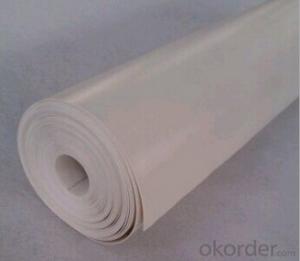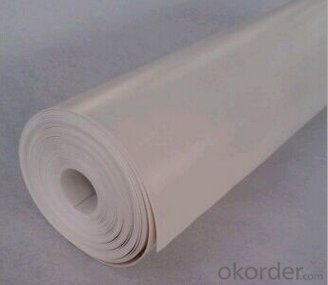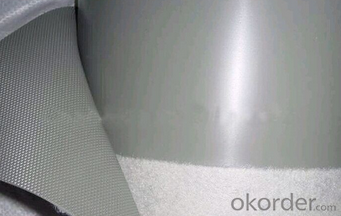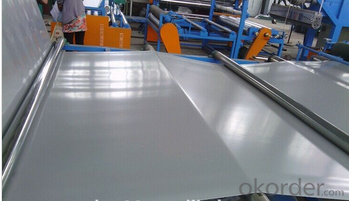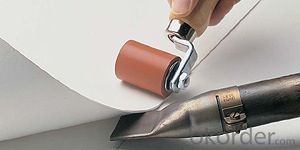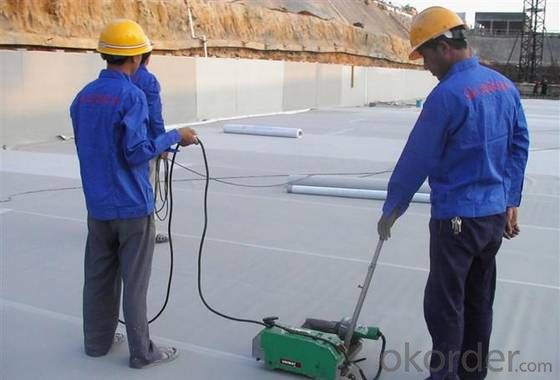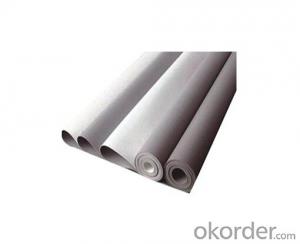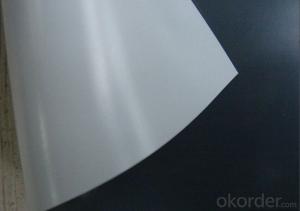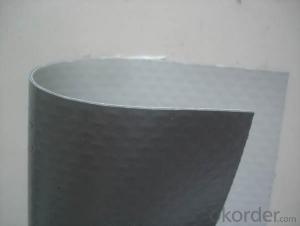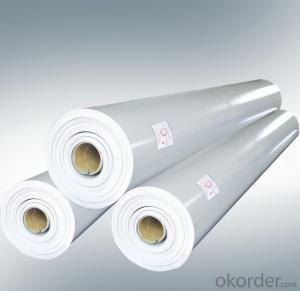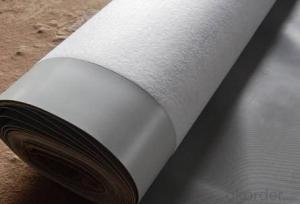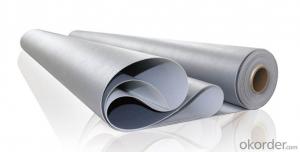PVC Waterproof Membrane No Craze No Bubble
- Loading Port:
- Tianjin
- Payment Terms:
- TT OR LC
- Min Order Qty:
- 2000 m²
- Supply Capability:
- 10000 m²/month
OKorder Service Pledge
OKorder Financial Service
You Might Also Like
Product description
Polyvinyl chloride PVC waterproof membrane is a kind of excellent performance of polymer waterproof material,PVC resin as the main raw material,add all kinds of special additive and anti-aging composition,the use of advanced equipment and advanced technology extrusion rolling is made.The product has the tensile strength and elongation high shrinkage of small,low temperature soft good,long life and other advantages, the products wide 1.2m to 3.0m, the thickness of 0.8-2.0 mm(special specifications can be customized),stable performance,reliable quality,construction is convenient.
Application Scope
The products are widely used in all kinds of civil construction,subway,tunnel,water conservancy,landfill site,chemical industry,metallurgy and other areas of waterproof seepage control,corrosion engineering
Features:
Excellent anti-aging property.
Puncture- resistant.
Welding construction,
High tensile strength, good elongation, good dimensional stability.
Good plasticity.
It has self-extinguishing from fire property.
Materials surface is smooth, fast color, stain resistance.
More wide, Wastage become less when being used.
Type:
N1—Exposed PVC waterproof membrane.
(It is mainly used as details treatment for exposed roof waterproof project)
N2—Non-exposed PVC waterproof membrane.
(It is mainly used as details treatment for non-exposed roof waterproof project)
L1—Exposed PVC waterproof membrane with fabric
(It is mainly used for exposed roof waterproof project)
L2—Non-exposed PVC waterproof membrane with fabric.
(It is mainly used for non-exposed roof waterproof project)
W1—Exposed reinforced PVC waterproof membrane .
(It is mainly used for steel structure roof exposed waterproof project)
W2—Exposed reinforced PVC waterproof membrane .
(It is mainly used for steel structure roof non-exposed waterproof project)
Advantages

Technical Parameters
No. | Item | Index | |||||
| 1 | Thickness of resin layer of the middle fabric ,mm≥ | - | - | 0.40 | 0.40 | 0.40 | |
| 2 | Tensile performance | Max tensile strength,N/cm ≥ | - | 120 | 250 | - | 120 |
| Tensile strength,NPa ≥ | 10 | - | -10 | - | - | ||
| Max elongation% ≥ | - | - | 15 | - | - | ||
| Breaking elongation % ≥ | 200 | 150 | - | 200 | 100 | ||
| 3 | Heat treatment size change rate%≤ | 2.0 | 1.0 | 0.5 | 0.1 | 0.1 | |
| 4 | Cold bonding | -25°c No cracks | |||||
| 5 | Watertightness | 0.3mPa,2h waterproof | |||||
Packaging & Shipping
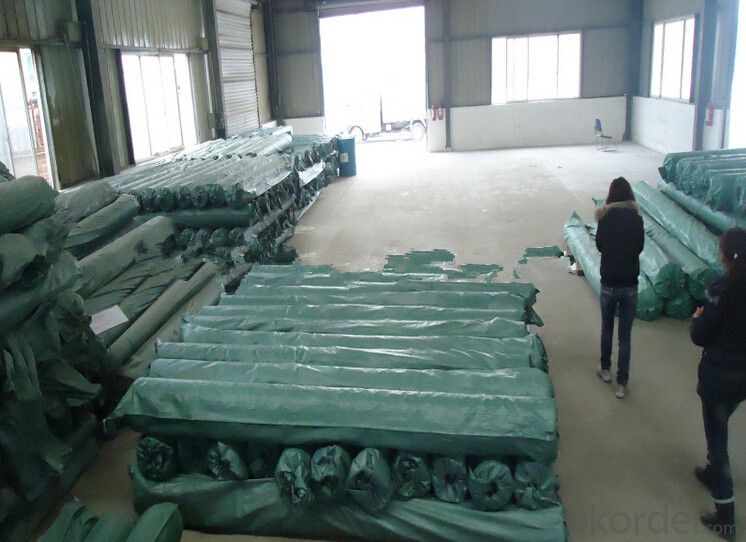
product show
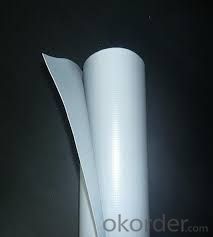
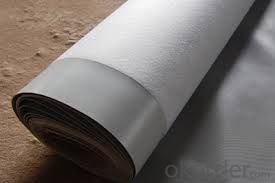
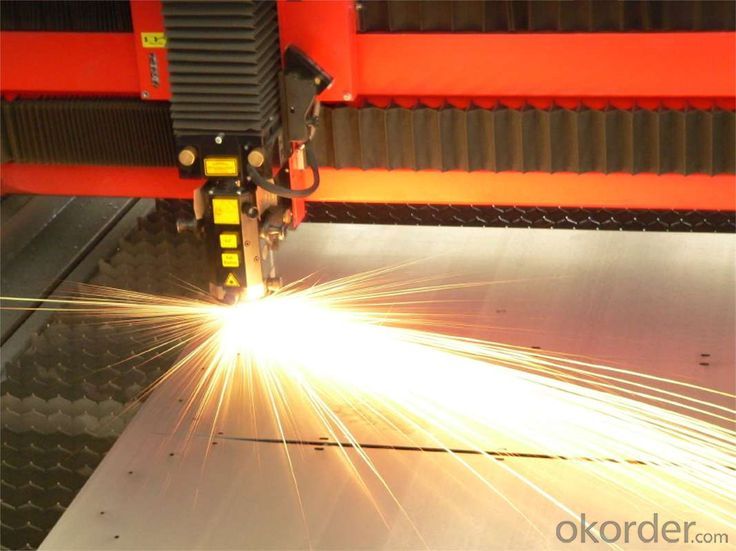
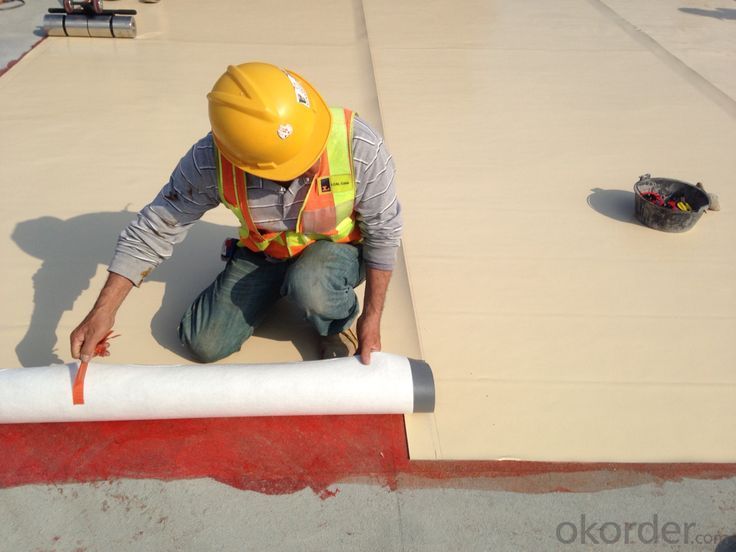
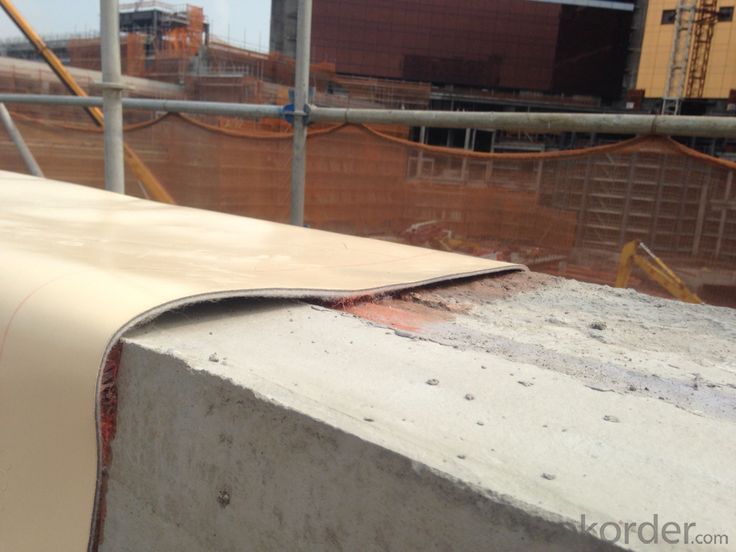
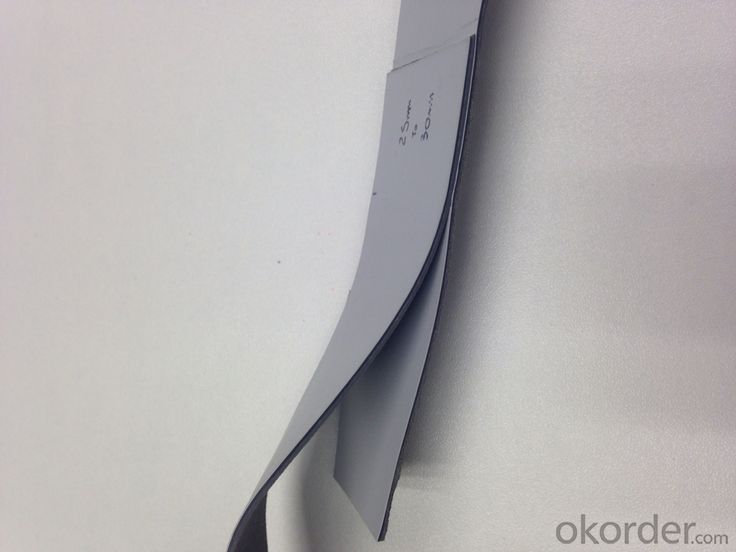
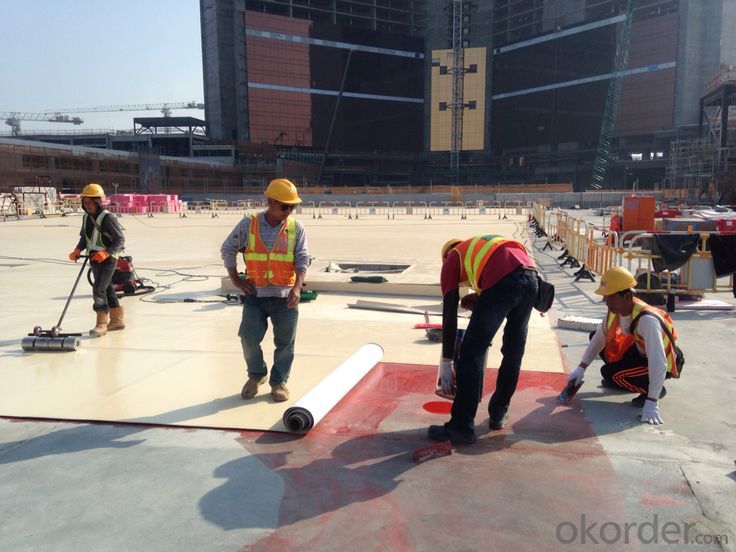
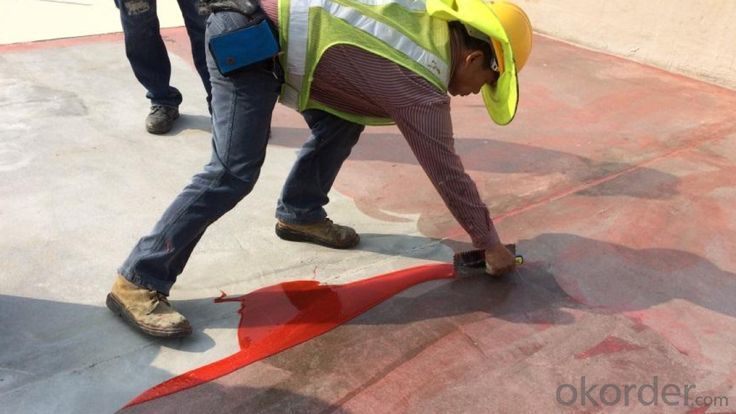
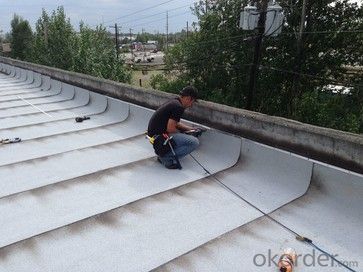
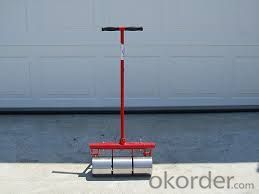
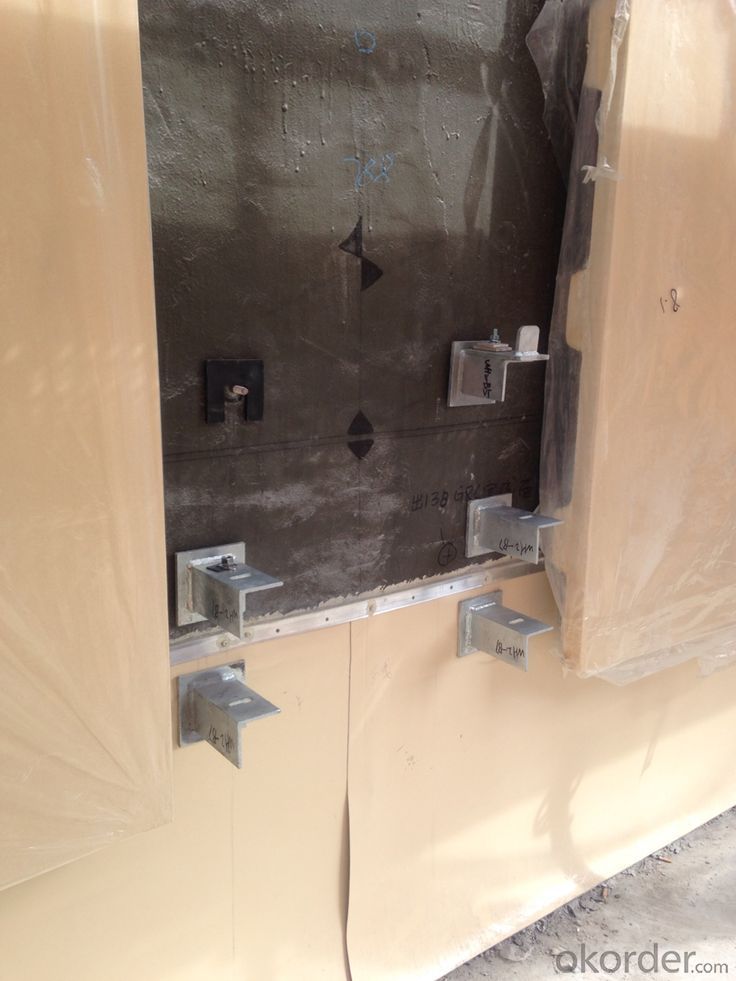
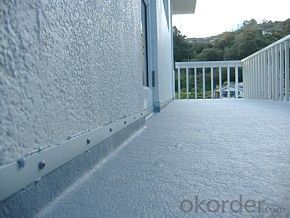
FAQ
Q: What's the delivery time ?
A: 3-5 days for 1-600 rolls, 10-15 days for container.
Q: What's the payment terms ?
A: TT/LC
Q: How do you make replacement with quality problems ?
A: New replacement will be packed into your next order or send to you directly after receive video or photo about quality problems.
- Q: Can a waterproofing membrane be used in swimming pools or other water features?
- Yes, a waterproofing membrane can definitely be used in swimming pools or other water features. In fact, it is highly recommended to use a waterproofing membrane in these areas to prevent water leakage and damage. A waterproofing membrane acts as a barrier between the water and the surrounding structures, ensuring that the water is contained within the pool or water feature. It helps to prevent water seepage, which can cause structural damage and lead to costly repairs. Additionally, a waterproofing membrane also helps to protect the pool or water feature from the harsh chemicals used for water treatment, ensuring its longevity and durability. Therefore, using a waterproofing membrane is a crucial step in the construction or renovation of swimming pools or other water features to ensure their functionality and longevity.
- Q: Can a waterproofing membrane be applied on vertical surfaces?
- Indeed, vertical surfaces can be treated with a waterproofing membrane. It is common practice to utilize such membranes on exterior walls, retaining walls, and foundations in order to safeguard the underlying structure by averting water infiltration. These specialized membranes are formulated to adhere to vertical surfaces, serving as a moisture blockade. To guarantee optimal waterproofing performance, they are typically applied in multiple layers. Moreover, a wide range of waterproofing membranes are accessible, namely liquid-applied, sheet-applied, and spray-applied membranes, each of which can be customized to suit the specific vertical surfaces and construction needs.
- Q: Can a waterproofing membrane be used for a podium deck?
- Indeed, a podium deck can utilize a waterproofing membrane. A podium deck refers to an elevated platform or structure commonly found in commercial buildings or multi-story residential complexes. Given its raised position, a podium deck is exposed to various weather elements, including rain and moisture. Consequently, it becomes imperative to implement a dependable waterproofing system to shield the underlying structure from water-related harm. A waterproofing membrane emerges as a popular option for podium decks due to its ability to serve as an effective barrier against water infiltration. Generally, this membrane is applied beneath the deck's surface, acting as a protective layer that thwarts water from permeating the underlying structure. Its design prioritizes durability, flexibility, and resistance to weathering, guaranteeing long-term protection for the deck. Additionally, a waterproofing membrane can yield supplementary advantages for a podium deck. It can function as a vapor barrier, preventing the accumulation of moisture within the structure, which could lead to mold growth and material deterioration. Moreover, certain waterproofing membranes offer heightened UV resistance, contributing to the deck's longevity and aesthetic appeal preservation. When selecting a waterproofing membrane for a podium deck, it is crucial to consider factors such as the deck's design, projected foot traffic levels, and local climate conditions. Different membrane types, including sheet membranes, liquid membranes, or spray-applied membranes, may be suitable depending on the specific project requirements. In conclusion, employing a waterproofing membrane indeed proves suitable for a podium deck. It furnishes a reliable and effective solution for safeguarding the deck and underlying structure from water damage, thereby ensuring the durability and functionality of the podium deck.
- Q: Are waterproofing membranes suitable for below-grade applications?
- Waterproofing membranes are well-suited for below-grade applications, as they are specifically designed to prevent water infiltration into structures below ground level, such as basements, foundations, and retaining walls. These membranes are constructed using durable materials, capable of withstanding soil and water pressure, thus providing long-term protection against leaks and water damage. Typically, they are installed on the exterior side of below-grade structures to create a barrier that blocks water from permeating the walls or floors. Moreover, waterproofing membranes possess flexibility, allowing them to accommodate structural movements, ensuring their effectiveness even in challenging below-grade environments. In summary, waterproofing membranes serve as a dependable and efficient solution for safeguarding below-grade structures from water intrusion.
- Q: Can a waterproofing membrane be used in earthquake-prone areas?
- Using a waterproofing membrane in areas prone to earthquakes is not only possible but highly advisable. This is because it serves as an effective shield against water infiltration, which can cause significant harm to buildings and structures during seismic events. The main purpose of waterproofing membranes is to create a barrier that prevents water from seeping in, thereby safeguarding the structural integrity of a building. Moreover, these membranes possess some degree of flexibility and elasticity, allowing them to absorb and distribute the forces exerted during an earthquake. This reduces the likelihood of cracks and leaks occurring. Nonetheless, it is crucial to ensure that the waterproofing membrane chosen is specifically designed and tested to meet the requirements of earthquake-prone areas. Factors such as the intensity and frequency of seismic activity in the region should be taken into account. Seeking advice from a structural engineer or waterproofing specialist is highly recommended to identify the most suitable waterproofing system for earthquake-prone areas.
- Q: Can a waterproofing membrane be used on tunnels with security systems?
- Yes, a waterproofing membrane can be used on tunnels with security systems. In fact, it is highly recommended to use a waterproofing membrane in tunnels, especially those with security systems, to protect the infrastructure and valuable equipment from water damage. Waterproofing membranes are designed to prevent water infiltration, providing a protective barrier against water leakage and potential moisture-related issues such as corrosion, mold growth, and structural deterioration. By using a waterproofing membrane in tunnels with security systems, the integrity of the tunnel structure and the functionality of the security systems can be preserved, ensuring the safety and security of the facility.
- Q: Is a waterproofing membrane resistant to abrasion?
- Yes, a waterproofing membrane is generally designed to be resistant to abrasion. The membrane is typically made of durable materials that can withstand friction and wear, ensuring long-lasting protection against water damage.
- Q: What is waterproofing membrane?
- Classification The asphalt or polymer waterproof material impregnated in the carcass, made of waterproof material products, in the form of coil, known as waterproofing membrane. According to the main composition of different materials, divided into asphalt
- Q: Are there any limitations to using a waterproofing membrane?
- Yes, there are some limitations to using a waterproofing membrane. One limitation is that the membrane can be punctured or damaged during installation, which can compromise its effectiveness. Additionally, waterproofing membranes may not be suitable for all types of surfaces or structures, and certain conditions such as extreme temperatures or excessive movement can affect their performance. Moreover, the lifespan of a waterproofing membrane can vary depending on factors like maintenance, exposure to UV rays, and overall wear and tear.
- Q: Can a waterproofing membrane be installed on wood surfaces?
- Yes, a waterproofing membrane can be installed on wood surfaces. Waterproofing membranes are commonly used on various surfaces including wood, concrete, and metal. When applied to wood surfaces, the membrane acts as a protective barrier, preventing water from seeping into the wood and causing damage such as rot, warping, or decay. It is important to choose a waterproofing membrane that is specifically designed for wood, as some products may not be suitable for this surface. Additionally, proper surface preparation and application techniques should be followed to ensure a strong and effective bond between the membrane and the wood surface.
Send your message to us
PVC Waterproof Membrane No Craze No Bubble
- Loading Port:
- Tianjin
- Payment Terms:
- TT OR LC
- Min Order Qty:
- 2000 m²
- Supply Capability:
- 10000 m²/month
OKorder Service Pledge
OKorder Financial Service
Similar products
Hot products
Hot Searches
Related keywords
